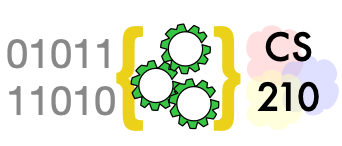A Free, Open, and Accessible Computer Science Text#
We are committed to making this text and accompanying materials free, open, and accessible to everyone, including students with disabilities. If you encounter accessibility issues with this text or the accompanying materials, including projects, please contact us.
Accessibility features#
Screen-reader compatibility#
We are attempting to make the web version of this text accessible to those who use screen-reader technology.
The content can be navigated using a keyboard
links, headings, and tables are formatted to work with screen readers
images have alternative text
information is not conveyed by color alone
This is work in progress, and we appreciate your notes regarding parts of this text or accompanying materials that are not accessible via screen reader.
Known issues for screen readers#
While these are issues we are aware of, we still welcome notes on your experience regarding them, and especially ideas regarding how we can overcome or ameliorate them.
Some math content is not being read by some screen readers, notably JAWS. We are investigating this issue.
Alternative formats for screen readers#
In addition to the web version, this text may be accessed in PDF and Markdown formats. However, the format over which we have the most control is HTML, and our initial experience is that PDF produced from our source material is less rather than more accessible to users of screen readers. While we are happy to attempt to produce the text in other formats, in most cases we think it will be more practical to enhance or augment the HTML version.
Accessibility of projects#
This text is associated with a set of projects, shared through github. Many of these projects have visual elements. In most cases the core learning goals of the project can be met and checked with provided test suites, but appreciating the goals of a project may be difficult.
In our experience, a Braille printer is sufficient to produce tactile graphics for a few small, carefully chosen examples of most of the graphical displays. We believe that a thermal capillary “swell” paper printing, sometimes used for tactile graphics in other domains, would be superior, although we have not yet had an opportunity to try swell paper printing of graphics associated with this text or associated projects.
We have also found that small examples are critical to making test cases accessible through a screen reader. For example, a problem involving a grid of 8 by 8 characters is an insurmountable memory burden, but often a scaled down 3 by 3 grid can illustrate concepts and algorithmic techniques sufficiently.
Accessibility of some, but not all projects have been refined for better non-visual accessibility with the help of a visually impaired student and their educational aide. We are mindful that they are far from perfect, and will appreciate both reports of barriers encountered and suggestions for approaches to improving them.
Other accessibility issues (besides vision)#
Are there other accessibility issues that we should be aware of, besides compatibility with screen readers? Please let us know.

